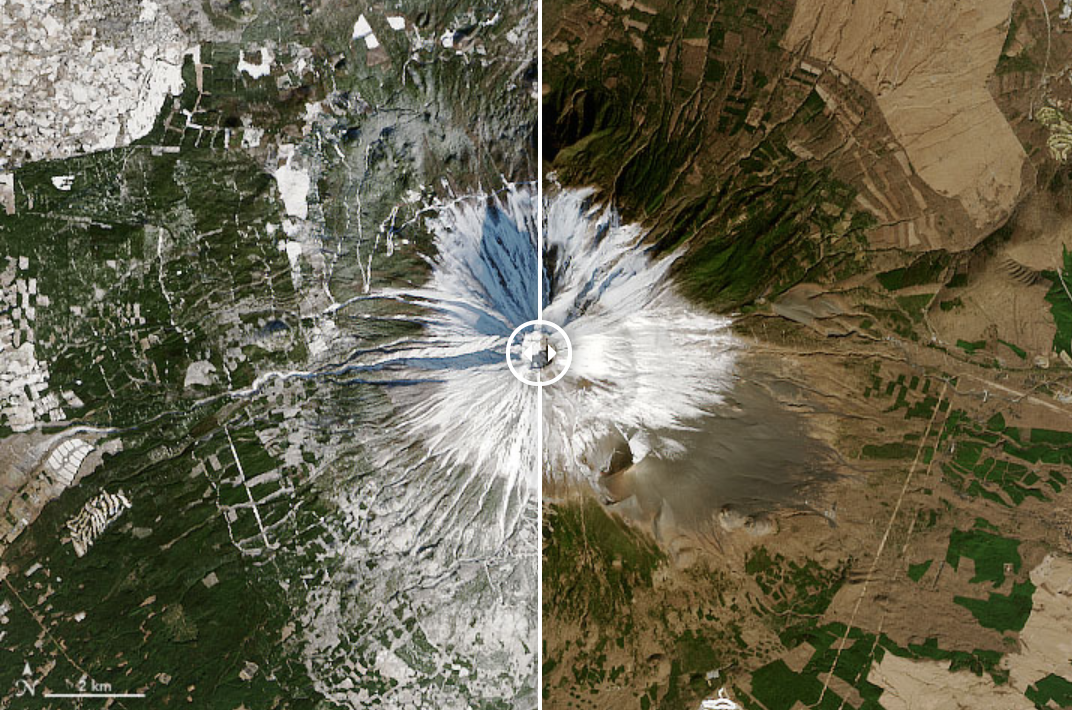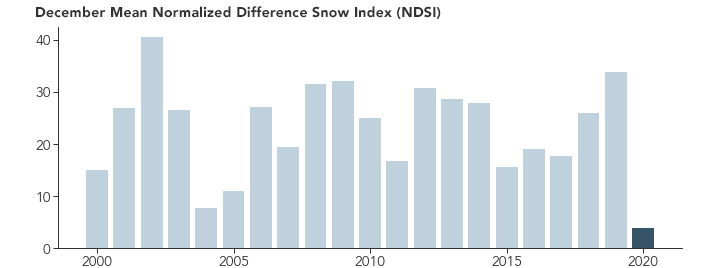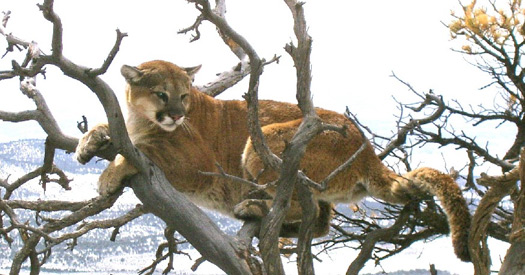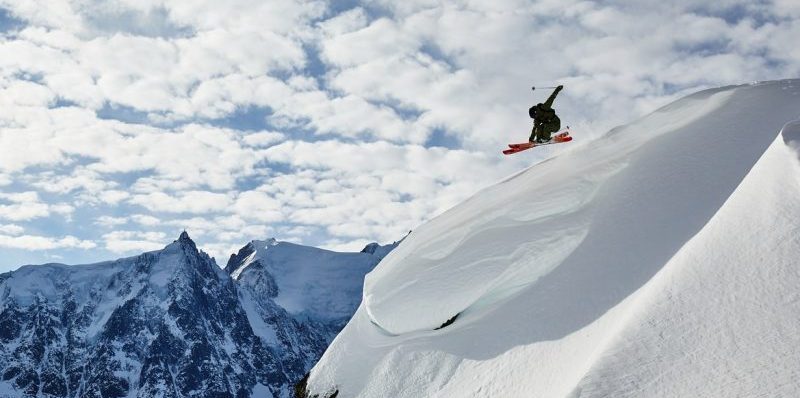
This article originally appeared on NASA Earth Observatory and was written by Adam Voiland
Photos courtesy of NASA Earth Observatory
Even as record snowfall has clobbered Japan’s western coast, much of the country’s eastern half has avoided major snow accumulation this winter. Notably, Mount Fuji’s iconic snow cap—which is normally visible throughout December—has been small or absent this year.
The mountain peak, the tallest in Japan, did get a dusting on September 28, 2020, its first snowfall of the year. But that melted off quickly, and Fuji’s snowcap remained elusive in the coming months. Normalized Difference Snow Index (NDSI) observations from NASA’s Terra satellite indicate that snow cover on the mountain last month was among the lowest in the satellite’s 20-year record for any December.

Ground-based weather stations made similar observations. “Stations around Mount Fuji recorded much less precipitation than usual in December,” said Toshio Iguchi, a remote sensing scientist based at NASA’s Goddard Space Flight Center. “Through December 24, it was only 10 percent of an average year.” Weather data also indicate that temperatures around the mountain were unusually warm during the first two weeks of December.
In the images at the top of the page, the bare upper slopes of the mountain were visible to the Operational Land Imager (OLI) on Landsat 8 satellite on January 1, 2021. The other image, also acquired by OLI, shows Mount Fuji on December 29, 2013. The mountain had a slightly above average amount of snow in December 2013, according to the Terra NDSI observations.
Toward the end of December 2020, the mountain finally received significant snow. But even chilly January weather does not guarantee that the snow cap will last. “After a few days, the snowcap was much reduced, likely blown away by wind,” said Teppei Yasunari, a remote sensing scientist based at Hokkaido University.
While local weather conditions are key to whether Fuji’s snow cap is present on any given day, long-term climate data indicates that conditions on the peak are changing. One recent study found the mountain’s timberline had moved upslope by 30 meters (100 feet) over the past four decades, likely due to a 2 degree Celsius (3.6 degrees Fahrenheit) increase in summer temperatures near the peak.
NASA Earth Observatory images by Joshua Stevens, using Landsat data from the U.S. Geological Survey and MODIS data from the National Snow and Ice Data Center. Story by Adam Voiland.




